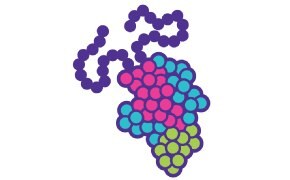Vaccine Manufacturing: Process Development and Expertise
Vaccine Development and Manufacturing Capabilities
Vaccines are among the most cost-effective health interventions against pathogens and other infectious diseases, saving millions of lives annually while improving quality of life for countless others. Growing global demand, however, poses severe challenges for vaccine manufacturers. Each new pathogen or outbreak adds to the variety of vaccine types and manufacturing methods needed, preventing establishment of robust processing templates that could improve overall effectiveness, safety, and affordability.
Featured Categories
The Mobius® Bioreactor family includes the bench scale (2 mL and 3 L), pilot, clinical and commercial manufacturing (50 – 2,000 L) single-use bioreactors that enable cell culturing capabilities from early process development through commercial batch production.
Optimize biopharma processes: top-tier upstream chemicals for research to commercialization. Reliability, transparency, regulatory support assured.
Enhance biopharma safety and compliance with our virus inactivation solutions, including pasteurization and low pH treatment.
We offer the industry’s highest quality sterile filtered liquid capabilities, supplying ready-to-use cell culture media, buffers, CIP and SIP products from GMP facilities worldwide to optimize your biopharma production.
From a manufacturing perspective, many factors are critical to accelerating vaccine production and meeting performance goals. These include predictable scale-up, optimal upstream productivity, robust impurity removal, maximized downstream recovery, speed to clinic, patient safety, and regulatory compliance. Achieving process improvements can drive success for all of the vaccine development platforms described below, but innovative technologies and a high level of application expertise are required.
VACCINE MANUFACTURING PLATFORMS
The process to manufacture attenuated virus-based vaccines is complex, consists of multiple steps and must maintain the infective potential of the attenuated virus.
Manufacturing of VLPs involves cell-based expression of the virus-shell protein. VLPs can be expressed in several heterologous expression systems including mammalian cell culture, baculovirus / insect cell culture system, microbial fermentation and plants.
While the manufacturing process for vaccine vectors is fairly templated, some challenges may arise, since several different viruses with varying properties can be used.
pDNA manufacturing presents several challenges. Production suffers from low productivity of microbial fermentation. Additionally, the purification process is complicated by the fact that the bacterial lysate is highly viscous and contains contaminants with properties similar to pDNA, leading to low resolution separation.
Development and manufacturing of mRNA vaccines is comparatively simple, scalable and extremely rapid. mRNA is produced by in vitro synthesis through an enzymatic process, there is no need to remove cells or host cell proteins, and it allows GMP facilities to switch to a new protein target within a very short period of time.
Protein subunit vaccines use purified, recombinant fragments of viral proteins as antigens to stimulate the immune system and create protective immunity. Because viral protein fragments are incapable of causing infection, recombinant protein-based vaccines are considered to be safer than use of live attenuated or inactivated viruses.
Visit our document search for data sheets, certificates and technical documentation.
Related Articles
- Cost Modeling Vaccine Manufacturing: Estimate Production Costs for mRNA and other Vaccine ModalitiesA custom-designed cost model is used to explore the economics of vaccine manufacturing across several different modalities including mRNA. The model enables greater process understanding, simulates bottlenecks, and helps to optimize production efficiency.
- Learn more one the attenuated viral vaccines manufacturing process: cell culture, clarification, nuclease treatment, chromatography, and sterile filtration.
- Influenza vaccines are commonly made using egg-based and cell-based manufacturing strategies. Find step-by-step information on the manufacturing process for each method.
- This technical article breaks down the adenovirus vaccine manufacturing process and provides a case study on developing an accelerated and cost-effective single-use adenoviral vector vaccine.
- This technical article breaks down the steps of upstream and downstream bioprocessing and formulation of virus-like particle vaccines.
- Free eBook outlines plasmid DNA manufacturing process and downstream purification challenges for various applications.
- See All (8)
Find More Articles and Protocols
How Can We Help
In case of any questions, please submit a customer support request
or talk to our customer service team:
Email custserv@sial.com
or call +1 (800) 244-1173
Additional Support
- Chromatogram Search
Use the Chromatogram Search to identify unknown compounds in your sample.
- Calculators & Apps
Web Toolbox - science research tools and resources for analytical chemistry, life science, chemical synthesis and materials science.
- Customer Support Request
Customer support including help with orders, products, accounts, and website technical issues.
- FAQ
Explore our Frequently Asked Questions for answers to commonly asked questions about our products and services.
To continue reading please sign in or create an account.
Don't Have An Account?









